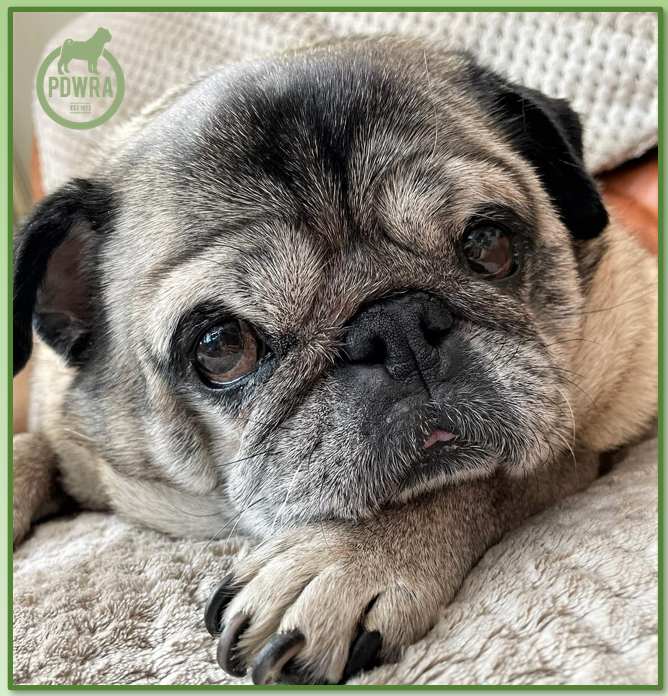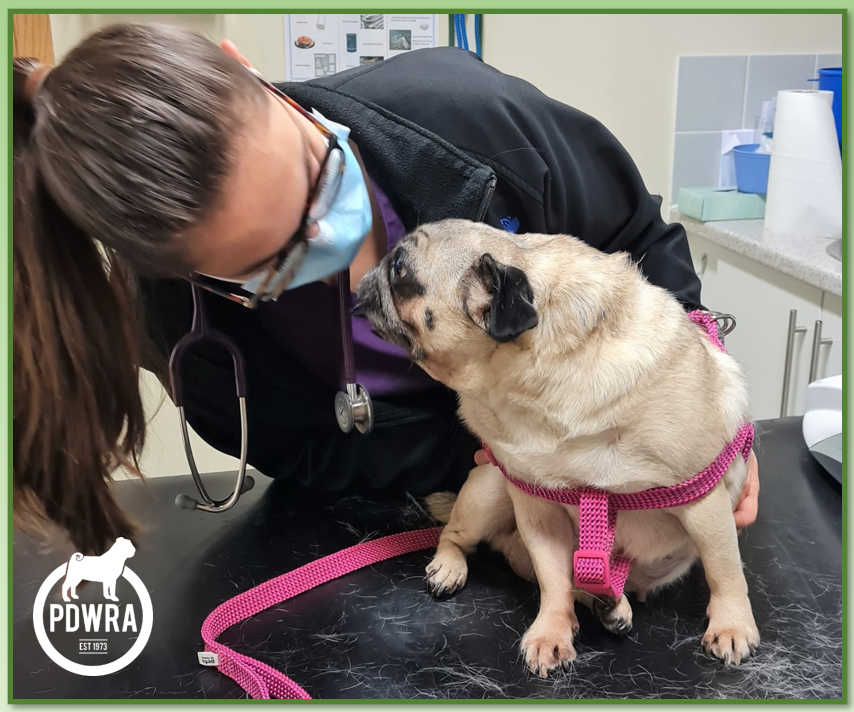Written by Helen McKee (MRCVS)
PDWRA Vet.
For this month’s health topic, I’m writing about seizures, which I suspect a significant number of you have had the misfortune of experiencing.
The conformation (shape) of a pug’s skull has been altered compared to non-brachycephalic dog breeds, such that it can alter brain function through both physiology (normal working of brain) and actual physical boundaries.
Since the brain is compromised because of these factors, it can result in a variety of brain conditions, the most common being seizures, which we see all too commonly in pugs.
A seizure can be a very frightening thing to observe, especially when it is your own dog. They can vary from what is known as a ‘Petit Mal’, when the signs are very mild, to a full blown ‘Grand Mal’ with severe signs such as shaking, rigidity, frothing of mouth and involuntary urination and/or defecations.
Pugs can have seizures for a variety of reasons, but the most common cause is ‘idiopathic epilepsy’, that is, epilepsy of an unknown cause, however it is important to rule out other conditions before coming to this diagnosis.
If your pug has a seizure, make a note of time, date, length of episode and severity (seizure diary). A video of the episode is really helpful for a vet, though easier said than done when witnessing your pug having a seizure which can be very distressing.
If the pug comes out of it quickly and appears normal after, it may be a one off. I have seen pugs have one off seizures as a result of some ‘stress’ on the body, such as a change in the environment (a new puppy!) or it’s body (an infection like cystitis).
It may be a one-off event, however if it happens again, you will need to take your dog to the vets to be examined. The vet will likely take blood to look for metabolic conditions that can cause seizures, such as liver disease (hepatic encephalopathy). By far the majority of times, these blood tests come back as normal.
There are rare conditions of the brain such as Granulomatous Meningoencephalitis (GME), Pug Dog Encephalitis (PDE) or a brain tumour, but these conditions are progressive with other clinical signs including head pressing, circling and behavioural changes, and it will soon become apparent that it is not epilepsy. Unfortunately all three conditions tend to be terminal.
Your vet may suggest carrying out an MRI scan in these cases and where medication is not controlling the symptoms, however, if you can’t afford a scan, then MRI won’t alter the outcome; it will just give a diagnosis. GME can be confirmed by taking a sample of the fluid that surrounds the spinal cord and brain (CSF).
However, the MAJORITY of cases of seizures in a pug, are caused by idiopathic epilepsy, a condition they have for life, but is normally able to be controlled through anti-seizure drugs such as Epiphen.
Depending on the frequency of your dog’s seizures, it may not need medication, for example, if they occur every 6 months it won’t warrant being on medication for a life time; It’s all about symptoms vs medication and its side effects.
Having been in contact with a specialist veterinary neurologist, who has a specific interest in idiopathic epilepsy in pugs, the drug of choice is Epiphen (phenobarbital). The dose is altered depending on therapeutic blood levels of the drug, so regular blood tests will be required initially.
Most pugs will respond to Epiphen only, however if the medication isn’t controlling the dog’s seizures, other anti-epileptic drugs can be added, such as Pexion.
Your vet can refer you to see a specialist neurologist at any stage, or if you’re concerned about the treatment.
This is by no means exhaustive, but merely an overview to enable some understanding of seizures and their potential causes.
I hope you find it helpful.
Helen.
PDWRA Vet.




